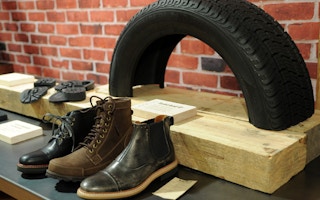Here’s our pick of the top five manufacturing developments in 2014:
To continue reading, subscribe to Eco‑Business.
There's something for everyone. We offer a range of subscription plans.
- Access our stories and receive our Insights Weekly newsletter with the free EB Member plan.
- Unlock unlimited access to our content and archive with EB Circle.
- Publish your content with EB Premium.
1. New products from closed loop recycling
The manufacturing industry is increasingly employing the principles of zero waste or closed loop recycling to produce new products, instead of sending waste to landfills. Some interesting innovations reported this year include a Japanese contact lens maker Menicon partnering with Starbucks to make cattle feed using fermentation technology from used coffee grounds. As a result, some of Starbucks’ shops in Japan uses milk that comes from cows fed by its coffee waste. Coffee waste has also been re-manufactured by United States start up Ministry of Supply into adour absorbers in men’s blazers.
Another example is a new enterprise - Net-Works - by Interface and the Zoological Society of London, which recycles old fishing nets into carpets while lifting the incomes of poor fishing communities. This year, its creators announced the expansion of the programme from the Philippines’ coastlines to Cameroon’s lake reserves.
2. The rise of cradle to cradle design
The cradle to cradle approach - which seeks to create production techniques that are not just efficient but are essentially waste free - is on the rise. As an example, Taiwanese personal care manufacturer Hair O’right launched this year a shampoo from coffee waste, packaged in biodegradable bottles made from the same coffee waste, and embedded it with coffee seeds which the consumer can bury in the soil.
In California, a company called Ecor derived raw material from organic waste materials such as wood, cardboard paper and other cellulose fibres, for several products including eyewear, utensils, furniture and containers.
3. Sustainable fashion in vogue
This year, major fashion industry players took steps to raise sustainability standards in the sector. In February, the industry was put in the spotlight when apparel from major designer brands such as Louis Vuitton, Dolce & Gabbana and Versace were tested positive for toxic chemicals by environmental campaign group Greenpeace. The luxury brands have yet respond with commitments to address the issue, but other well known brands such as adidas, major Italian textile suppliers, German retailer Tchibo and sports wear Puma have made their pledges this year to eliminate hazardous chemicals in their supply chains.
Some examples of product innovation from repurposed waste material include US pop music artist Pharrell Williams’s and Dutch denim label G-Star Raw‘s new kind of denim line which features a unique blend of materials – recycled plastic PET taken from the ocean, and cotton. Award-winning US professor Richard Wool also found a way to make a leather substitute out of chicken feathers, a manufacturing method that uses less energy and water. Separately, Singapore-based tyre distributor Omni United and United States casual outdoor shoe and clothing maker Timberland launched a new line of tyres that will be recycled and used in shoes.
4. The rise of 3D printing
3D printing has increased in popularity this year especially in the production of materials for medical and healthcare uses such prosthetics and other implants. The technology is also being explored, for example, to produce eye wear in a more sustainable manner. Houses can also now be mass produced using 3D printers. A construction firm in Shanghai was able to build 10 houses within 24 hours by repurposing China’s 1.5 billion tonnes of construction waste into ‘ink’.
5. A guide on traceability
The United Nations Global Compact and BSR this year launched the world’s first guide on traceability in a bid to advance supply chain sustainability. It aims to help companies and consumers to ensure their material or product is produced responsibly. The guide also presents lessons and real-life case studies on a wide range of products that are applicable across companies and industries around the world.
This story is part of our Year in Review series, which looks at the top stories that shaped the business and sustainability scene in each of our 11 categories.














